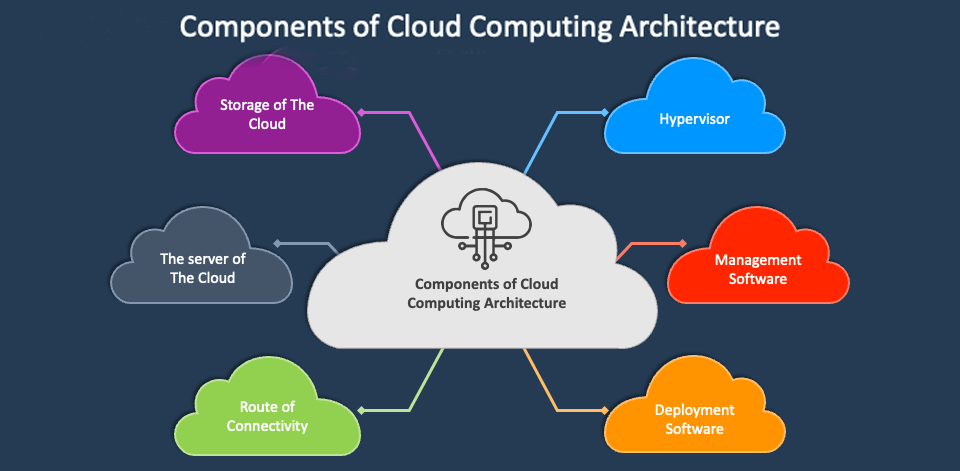Center for Cloud Computing Development
About
Cloud computing is a virtualization-based technology that allows us to create, configure, and customize applications via an internet connection. The cloud technology includes a development platform, hard disk, software application, and database.
The term cloud refers to a network or the internet. It is a technology that uses remote servers on the internet to store, manage, and access data online rather than local drives. The data can be anything such as files, images, documents, audio, video, and more.
Aneka is a platform and framework for developing distributed applications on the Cloud. It uses desktop PCs on-demand and CPU cycles in addition to a heterogeneous network of servers or data centres. Aneka provides a rich set of APIs (Application Programming Interface) for developers to transparently exploit such resources and express the business logic of applications using preferred programming abstractions.
System administrators can leverage a collection of tools to monitor and control the deployed infrastructure. It can be a public cloud available to anyone via the Internet or a private cloud formed by nodes with restricted access.
A multiplex-based computing cloud is a collection of physical and virtualized resources connected via a network, either the Internet or a private intranet. Each resource hosts an instance of multiple containers that represent the runtime environment where distributed applications are executed. The container provides the basic management features of a single node and takes advantage of all the other functions of its hosting services.
One of the key features of Aneka is its ability to provide a variety of ways to express distributed applications by offering different programming models; Execution services are mostly concerned with providing middleware with the implementation of these models. Additional services such as persistence and security are inverse to the whole stack of services hosted by the container.
An Aneka-based cloud is formed by interconnected resources that are dynamically modified according to user needs using resource virtualization or additional CPU cycles for desktop machines.
The primary functions of the research centre are to
- Provide excellent research culture and infrastructure.
- Serve as a platform for strong interdisciplinary collaborations and knowledge sharing.
- Supports Experiential learning.
- Publish papers in high quality journals of international repute.
- Create quality human resources for scientific research.
- Promote industrial collaborations involving active and mutually beneficial R & D projects.
- Understanding of technology transfer processes and practices that lead to successful commercialization
Major Focus on
Infrastructure-as-a-Service (IaaS) and Platform-as-a-Service (PaaS)
Infrastructure-as-a-Service (IaaS) delivers fundamental compute, network and storage resources to consumers on-demand, over the Internet and on a pay-as-you-go basis. Platform-as-a-Service (PaaS) provides customers a complete cloud platform — hardware, software and infrastructure — for developing, running and managing applications without the cost, complexity and inflexibility of building and maintaining that platform on-premises
Software-as-a-Service (SaaS)
Software-as-a-Service (SaaS) is similar to the IaaS and PaaS uses described above, it actually deserves its own mention for the undeniable change this model has brought about in the way companies use software. SaaS offers software access online via a subscription, rather than IT teams having to buy and install it on individual systems.
Hybrid cloud and multicloud
Hybrid cloud is a computing environment that connects a company’s on-premises private cloud services and third-party public cloud services into a single, flexible infrastructure for running critical applications and workloads. This unique mix of public and private cloud resources makes it easier to select the optimal cloud for each application or workload and then move the workloads freely between the two clouds as circumstances change. With a hybrid cloud infrastructure, technical and business objectives are fulfilled more effectively and cost-efficiently than could be achieved with a public or private cloud alone.
Test and development
One of the best use cases for the cloud is a software development environment. DevOps teams can quickly spin up development, testing and production environments tailored for specific needs. This can include, but is not limited to, automated provisioning of physical and virtual machines.
Big data analytics
By leveraging the computing power of cloud computing, companies can gain powerful insights and optimize business processes through big data analytics.
Cloud storage
Cloud data storage enables files to be automatically saved to the cloud, and then they can be accessed, stored and retrieved from any device with an Internet connection. Rather than maintaining their own data centers for storage, organizations can only pay for the amount of cloud storage they are actually consuming and do so without the worries of overseeing the daily maintenance of the storage infrastructure. The result is higher availability, speed, scalability and security for the data storage environment.
Disaster recovery and data backup
Another benefit derived from using cloud is the cost-effectiveness of a disaster recovery (DR) solution that provides for faster recovery from a mesh of different physical locations at a much lower cost than a traditional DR site. Building a DR site and testing a business continuity plan can be an extremely expensive and time-consuming task with fixed assets.
Equipment / Software
| S No |
Description |
Quantity |
| 1 |
Aneka Software |
30 Users |
Contact
Dr P Ashok Babu
Professor of Artificial Intelligence and Machine Learning
Email: p.ashokbabu@iare.ac.in
Phone: 9848898290



 Work with Us
Work with Us Campus Map
Campus Map How to Reach Us
How to Reach Us Online Degree Verification
Online Degree Verification Photo Gallery
Photo Gallery